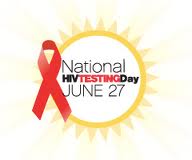New HIV Treatment Guidelines to Cut Millions of Deaths
(Medscape)
KUALA LUMPUR, Malaysia — The World Health Organization has unveiled its much-anticipated new HIV treatment guidelines. Officials say the new approach will prevent 3 million deaths by 2025 and will stop 3.5 million new infections.
“The WHO estimates that these new guidelines will have an unprecedented impact,” director-general Margaret Chan, MD, told a packed room here at the 7th International AIDS Society (IAS) Conference on HIV Pathogenesis, Treatment and Prevention.
An estimated 17 million people are eligible to take antiretroviral drugs, but under the new recommendations this number will increase to 26 million.
The approach reflects the growing body of evidence that treating patients earlier at higher CD4 cell counts, when immune systems are still largely intact, can greatly reduce mortality and prevent HIV transmission.
“Prior WHO guidelines had been for treatment at much later stages of disease,” IAS president-elect Chris Beyrer, MD, professor and associate director for public health, Johns Hopkins Center for Global Health, Baltimore, Maryland, toldMedscape Medical News. “These revisions are based on our new understanding that earlier treatment can have a huge impact on the clinical care of the patient,” he said. “It also turns out that it has a big impact on reducing tuberculosis morbidity and mortality, which is very important in the Asia-Pacific region and Africa.”
The other critical improvement with these new recommendations, said Dr. Beyrer, is the reduction in HIV transmission. “This is a very important announcement, really. WHO guidelines play a normative roll — they’re paid attention to by global ministers of health, and that really matters.”
The new guidelines recommend starting antiretroviral therapy in all patients with a CD4 cell count of 500 cells/mm2 or less. Other people should be started on antiretrovirals right away — regardless of CD4 counts — such as HIV-positive serodiscordant couples, patients with hepatitis-B coinfection, women pregnant or breast-feeding, and children younger than 5 years of age.



